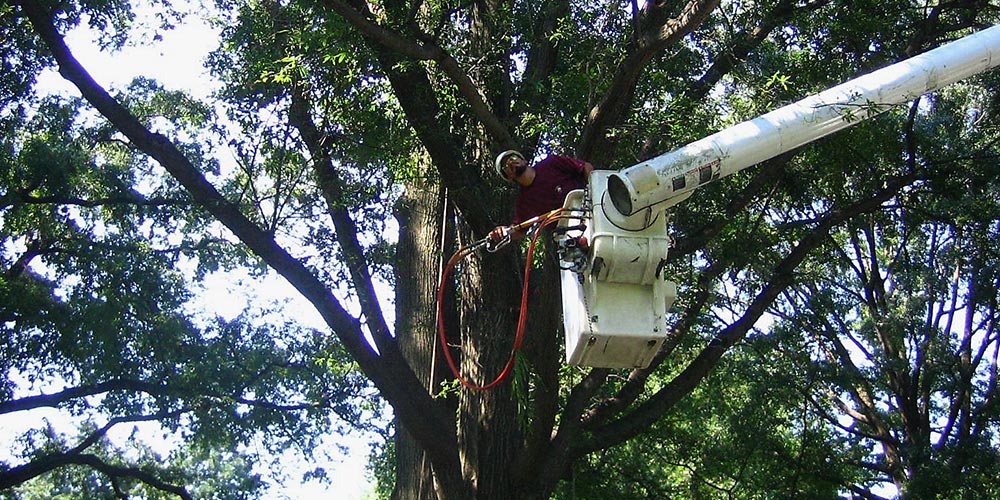
Can A Tree With A Cracked Trunk Be Saved
September 26, 2021
While there are many reasons behind a crack in your tree trunk ranging from extreme weather fluctuations, light striking, and diseases, the real question people ask arborist services is: Can you save a tree with splits and cracks? Here I’ve penned down a documented guide to help you save your damaged tree and when it needs removal.
Possible Reasons Behind Cracked Trunks
Talking about why a tree has vertical cracks running upside down the trunk, the tree needs inspection. The first possible reason can be the fluctuation in temperature.
For instance, when the environment gets too hot and xylem needs to transfer water towards the upper part of the tree. And then there’s a sudden change in the weather, turning the environment cool. It is when the water freezes in tubes, resulting in cracking of the trunk.
Another possible reason is light striking. But, according to the arborists, the symptoms of light striking are pretty obvious and severe. So, either it simply removes the tree from its place or cracks it severely, leaving the tree unable to heal.
The third reason can be carelessness of the owners, for when you apply a pesticide or an herbicide product too much on the tree, it splits the bark.
Another reason which I’ve seen is the rapid growth of the tree. When the tree, along with its dense part, grows too fast, it gets difficult for the trunk to get along with, and it breaks. Sometimes, the tree can be saved. In other cases, you should consider removing the tree.
Can You Save A Cracked Tree?
The answer is a resounding yes! According to professional arborists, it is possible to save the tree until you cannot see the heartwood through the crack. The only condition is to be fast. So, start repairing the tree when you start seeing cracks before it’s too late.
Well, that’s because once you start seeing the heartwood, the pests and weeds start seeing it too. And your tree becomes prone to insect attack and other diseases.
Ways To Repair A Cracked Trunk?
There are several ways to repair your dying tree. Let’s have a look at a few of them.
Reattaching The Broken Branches
Let’s suppose if the crack happened near the branch’s collar that made the branch detach from the trunk, you could still reattach it if it hasn’t died completely.
Simply use duct tape and attach the branch with the trunk. And then, let nature do its work. Your branch will gradually heal.
Removing The Wound
So, if there’s a wound in the trunk that you see is further damaging the tree, not letting it transfer nutrients and heal. You can simply remove the cut. Start with trimming the edges and then cut the decaying part.
Bolting
One of the ultimate ways to help support the tree structure is bolting. In this method, you have to drill holes in the trunk and tie the bark with long threaded stainless-steel rods and bolts. And large washers on both sides of the bolts will help provide more surface area and prevent you from digging deep into the bark.
More, be sure you attach the two broken halves closely to help them heal. Along with that, keep an eye on the bark. If you hear the cracking sound, stop tightening.
And when you drill a rod in the trunk and attach washers on both ends, the end result will be a healed split. However, this isn’t always the case, but when it is, it feels pretty satisfying.
When It Is Time To Cut Down The Tree?
When the damage has already been done, you cannot do anything but cut the tree. Your tree will drop hints for you. Look closely if the circumference is damaged above 50% of the branches are dead. It is time to cut the tree.
But, if you’re still confused about the hints, you can call an arborist to come and analyze your tree.
If you’re cutting the tree yourself, be sure you have all the equipment at hand and safety first, remember?
If the tree is too big for you to handle or to grow near some building or another dominating tree, you can always call a tree cutting service Bethesda for help. They will inspect the tree and remove it safely without damaging the surroundings.
